Manali: Muck generated by construction of the 24 MW capacity Kanchan Janga hydro power project in Manali valley by being dumped along a Beas River tributary has disrupted its natural course and is posing a threat to downstream habitations and farmlands.
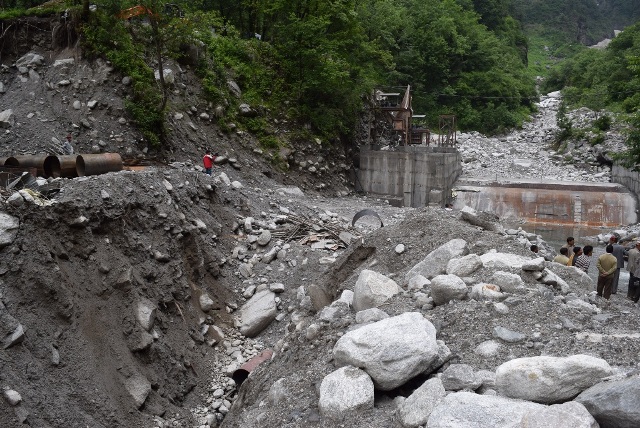
The large scale muck dumping at dam construction and power house approach road sites have the potential to unleash massive destruction like Uttarakhand witnessed last year.
There are a large number of land holdings, grazing lands and many houses close to natural stream flow course that face imminent danger.
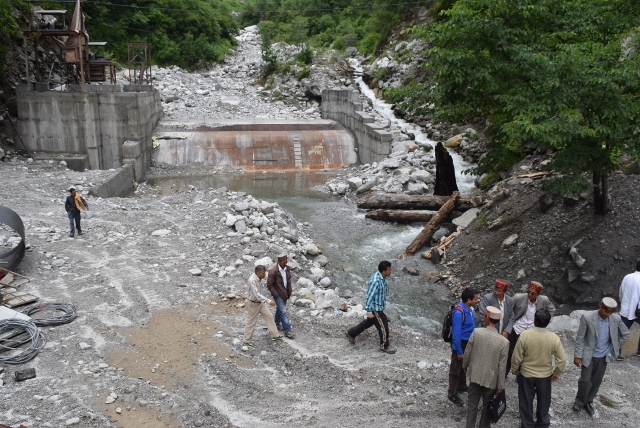
Illegal encroachments and haphazard construction, besides illegal dumping of muck generated by hydro projects, have led to an alarming situation in the area.
Beas River originates from Beas Kund in Rohtang Pass from where it traces a path Manali to Mandi, through a densely populated valley.
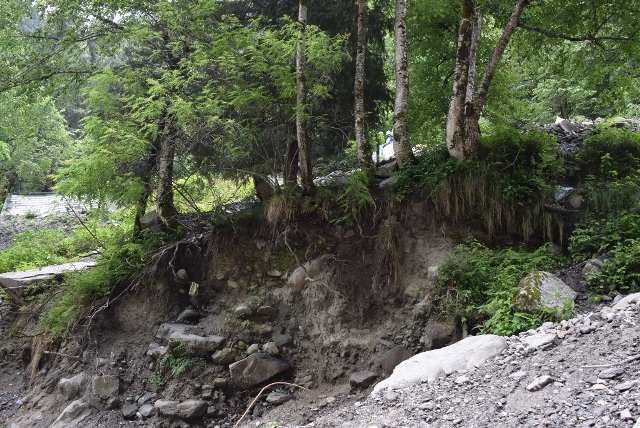
“At places like Kullu, Patlikuh, Aut and Pandoh, people have made permanent constructions, erecting walls right along the river’s course. Between Aut and Pandoh, muck generated by hydel projects has been dumped, which has narrowed the course of Beas River,” social activist Bhag Chand Rana points out.
Damage to the natural Ravi River course in Chamba too is extensive that pose a danger to the many new townships and villages that have come up along its course.
The river course has narrowed due to dumping of muck generated by construction of hydro power projects in the valley.
Where in flood like situations, gushing water and muck have caused downstream damage, the forest department of Chamba has in fact, imposed a penalty on erring companies,” says Rana.
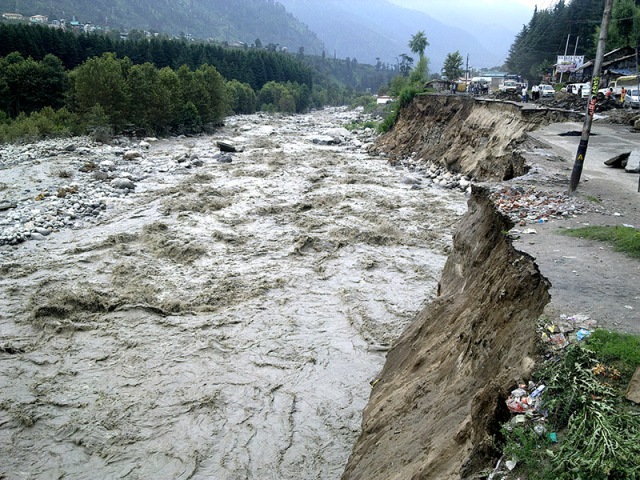
Environmentalist Krishan Lal says, “Muck dumping along Beas has not only narrowed the original river course, but it has forced the river to change its course at places. During monsoons when the river is in spate, massive damage to life and property can happen anytime.”
Dr J C Kuniyal, senior scientist, GB Pant Institute of Himalayan Environment and Development, Mohal in Kullu, says, “lessons from last year’s Uttarakhand disaster have not been learnt.
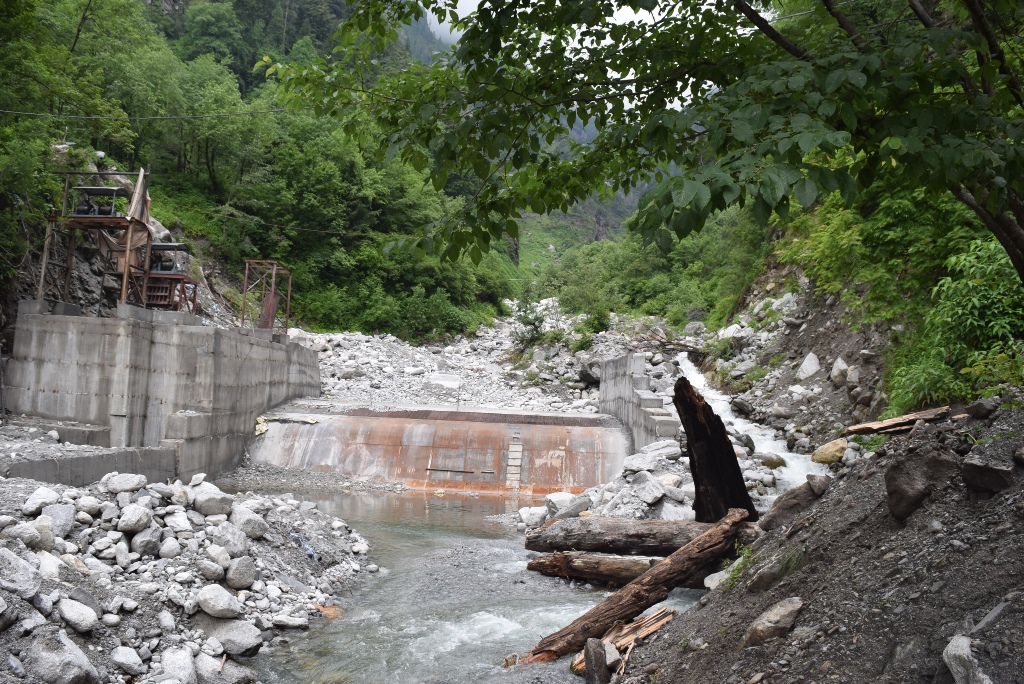
“Muck dumping along the river bed is not only posing threat to aquatic life, flora and fauna, it is also posing threat to habitation located along the rivers downstream,” he said.
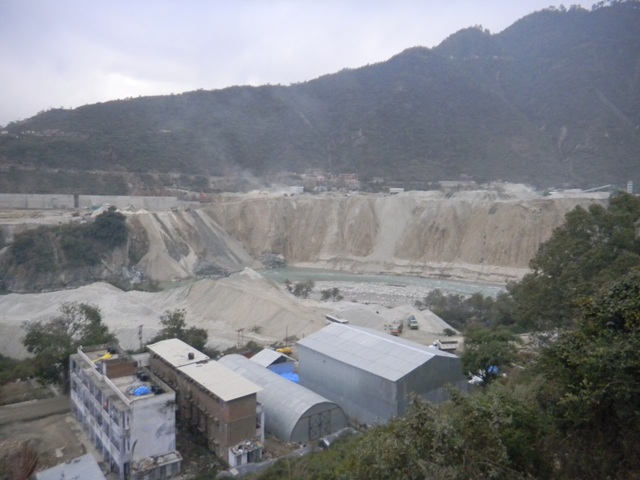
Kuniyal said that the muck deposited along the river banks is not stable and during floods, mud and rock start floating, creating additional force, thus increasing the velocity of water flow.
“During floods, muck dumped along the river banks plays a supporting role in causing destruction and in increasing the impact of floods,” said Kuniyal.
Manali MLA Govind Thakur said that haphazard construction, especially along river banks, in the state has become a cause of concern.
“To ensure that such haphazard construction does not take place along the river course, strict measures would be taken so that construction takes place at a safe distance from the rivers, said Thakur.
SDM ,Manali Vinay Dhiman while speaking to Hill Post said that he has asked the Forest Depart and Pollution Control Board to take stock of the situation.
Timeline: Major Flood Disasters
- July 1973: Blockage of Satluj River due to rock fall at Nathpa had formed a lake. Later, a breach in it damaged Sanjay Power House, resulting in loss of around Rs 4.5 crore.
- January 1975: An earthquake caused blockage in Satluj basin at two places in Spiti valley, resulting in formation of a 60m-high 150m-long lake. Two months later, a breach in the lake caused flashfloods in Spiti valley.
- September 1988: A cloudburst caused flashfloods in Soldang Khad in Kinnaur, causing massive damage to human life and property downstream, including 2 km national highway along Soldang Khad, in which 32 people were killed and 15 houses damaged.
- July and August 2, 1991: A 1,500m road stretch of national highway-22 in Spiti valley was damaged due to flashfloods and landslides in Maling Nallah. It caused damage to agricultural land in Leo village of Kinnaur, located downstream.
- September 1995: Flashfloods in Beas River in Kullu district caused damage to public and private property. Besides killing 65 people, it caused losses of around Rs 76 crore.
- August 1997: Around 124 people were killed after flashfloods hit Andhra Khad of Pabbar valley of Shimla district, which also damaged a power house.
- August 2000: Flashfloods in Kinnaur district. With unprecedented rise in Satluj river right from Khab to downstream areas, massive damage was witnessed. Around 200 km of NH-22 suffered extensive damage while 22 bridges were washed away. Loss was calculated at around Rs 1,450 crore.
- July 2001: Cloudburst in Sain area of Kullu district resulted in flashfloods affecting over 6,500 people in the area.
- June 2005: A breach in Parchoo lake in China resulted in rise of water levels in Satluj river, causing huge damage downstream. Around three dozen big and small bridges were washed away and loss to property was calculated at around Rs 600 crore.
Photos by Sanjay Dutta

Sanjay Dutta, an engineer by qualification but is a journalist by choice.
He has worked for the premier new agency Press Trust of India and leading English daily Indian Express.
With more than a decade of experience, he has been highlighting issues related to environment, tourism and other aspects affecting mountain ecology.
Sanjay Dutta lives in a village close to Manali in Kullu valley of Himachal.


